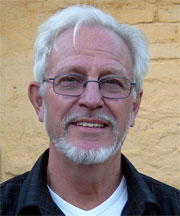Larry David on Some Jewish Stereotypes
In looking around for inspiration on Larry David, I came across this in an article by Gilad Atzmon (whom I admire):
David spits on everything: you name it, he spits on it. It was David who exposes the Jewish fetish with body organs long before we all started to discuss Israeli organ harvesting. David ridicules the Shoa obsession, the Jewish and anti Wagner fetish [here’s the Wagner video]. David spits on every possible American value one can think of. He mocks the celebrity culture, materialism and greed. He exposes Jewish supremacy, ignorance and arrogance. Yet, he is doing it all by putting himself in the line of fire. He doesn’t just bring to light to Jewish ugliness, he often embodies this ugliness himself.
I can’t say that I have seen many episodes of Curb Your Enthusiasm, but I happened to see the premier for the new season, and it definitely stepped on Jewish sensibilities. (But, as Atmon says, David offends everyone—here giving instructions to a teenage girl on how to insert a tampon. Probably a sign that he is a sociopath at heart.)
The main plot revolves around the fact that the divorce lawyer hired by David turns out not to be Jewish, but Swedish and Christian. David assumed that with a name like Berg and with Jewish religious paraphernalia ostentatiously decorating his office, that he must be Jewish. Berg also talks with a Jewish accent and liberally drops Yiddish words into his conversation. It turns out that he even hosts Hanukkah parties. David exclaims, “I get a Swede lawyer. She’s going to get everything…. I got Sweded”—obviously a play on “Jewed” which plays on the stereotype of Jews engaging in sharp business practices/fraud.
(Another stereotype—which I think goes a long way toward explaining the attraction of Jewish men to non-Jewish women: the aggressive Jewish woman. While dining, a Jewish character casually says that if he ever gets divorced, he will be very equitable with the assets. His Jewish wife explodes with a torrent of hostility to the effect that if we ever get divorced, she will take him for every penny he has and nail his balls to the wall, etc. It’s like an earthquake. Everyone at the table sits in stunned silent for a while. Then it passes and things move on smoothly. We later see husband and wife very happy together.) Read more







